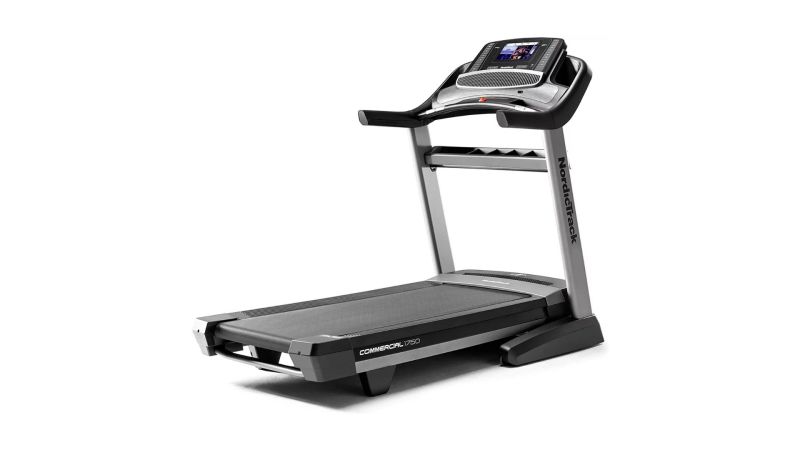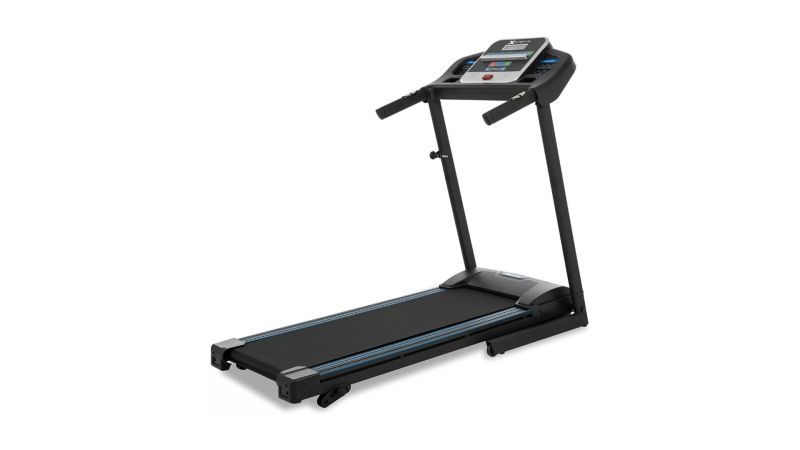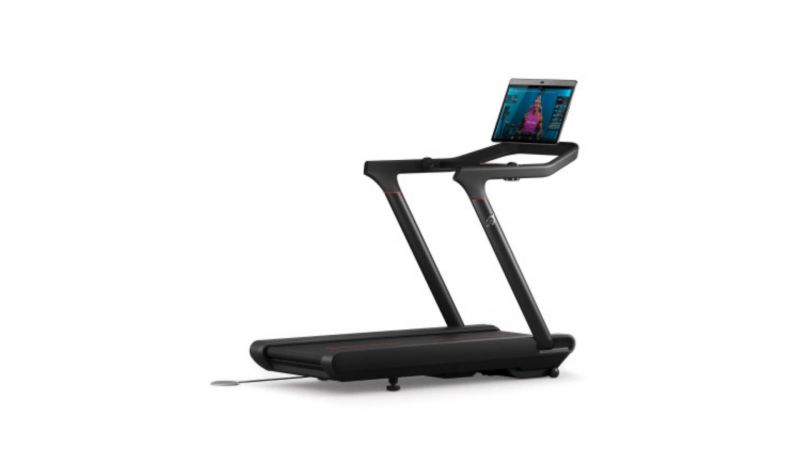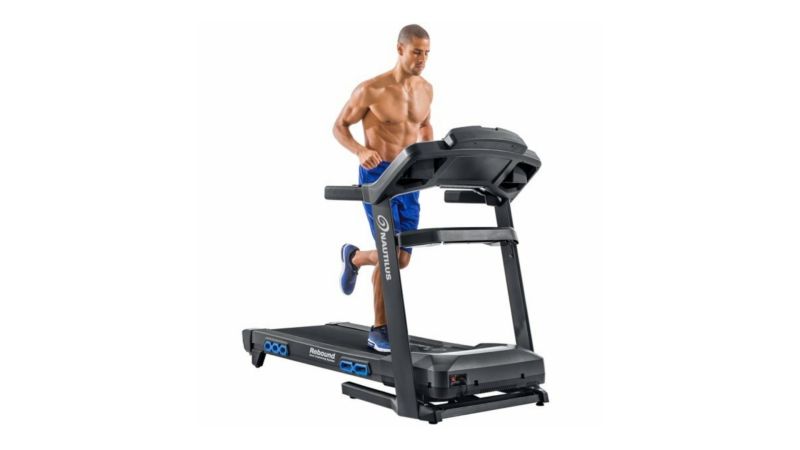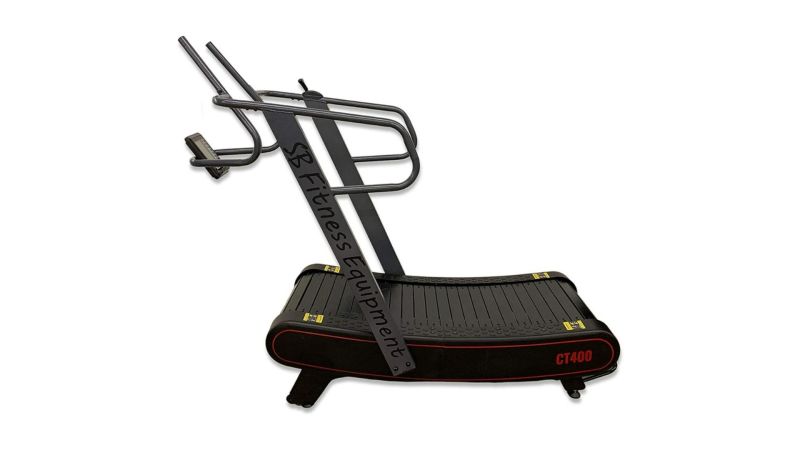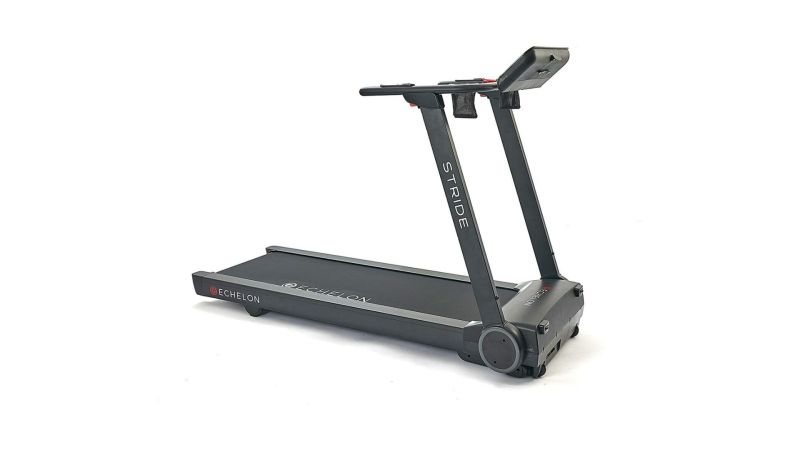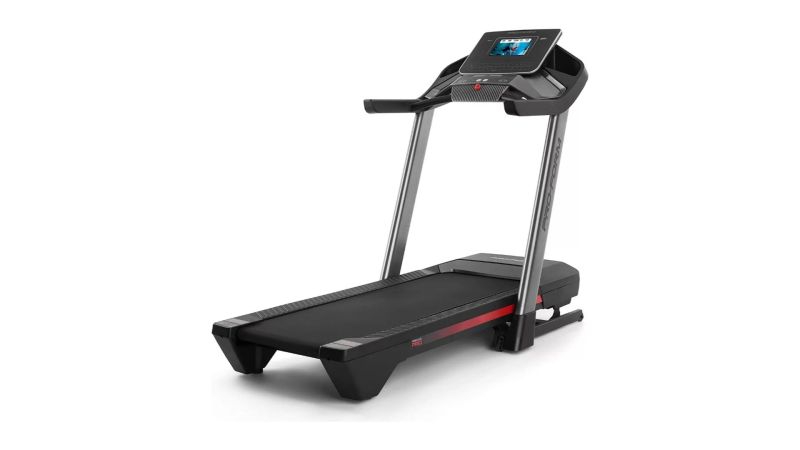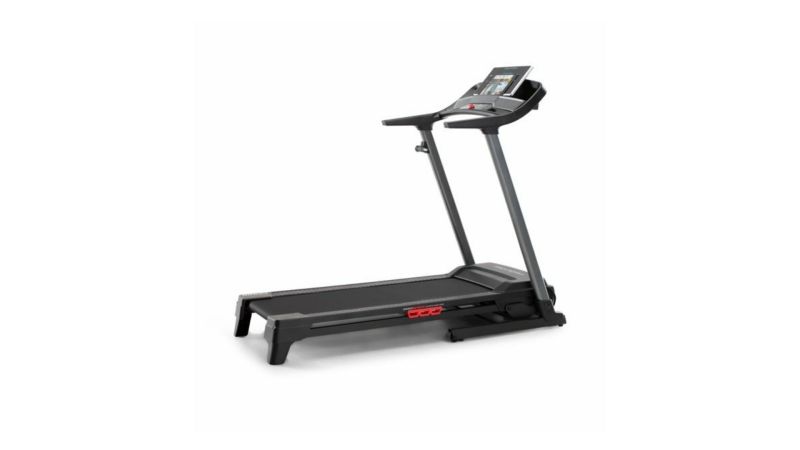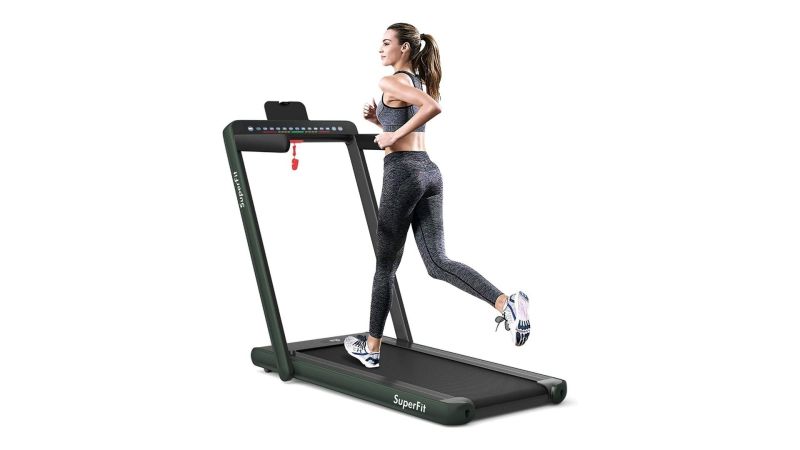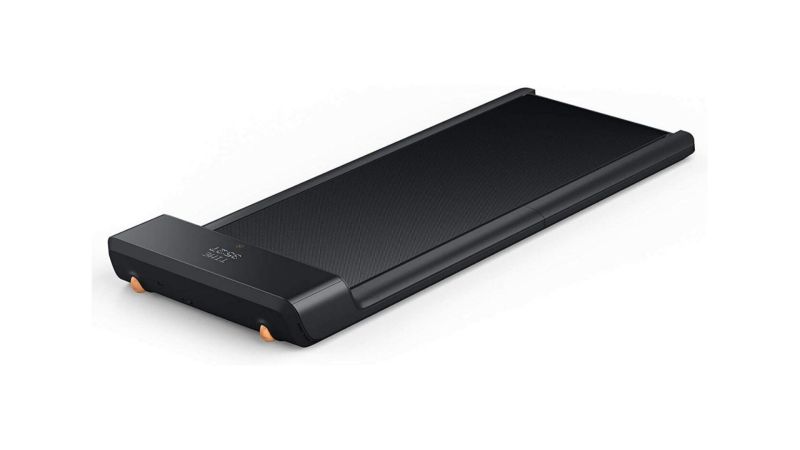We may earn revenue from the products available on this page and participate in affiliate programs.
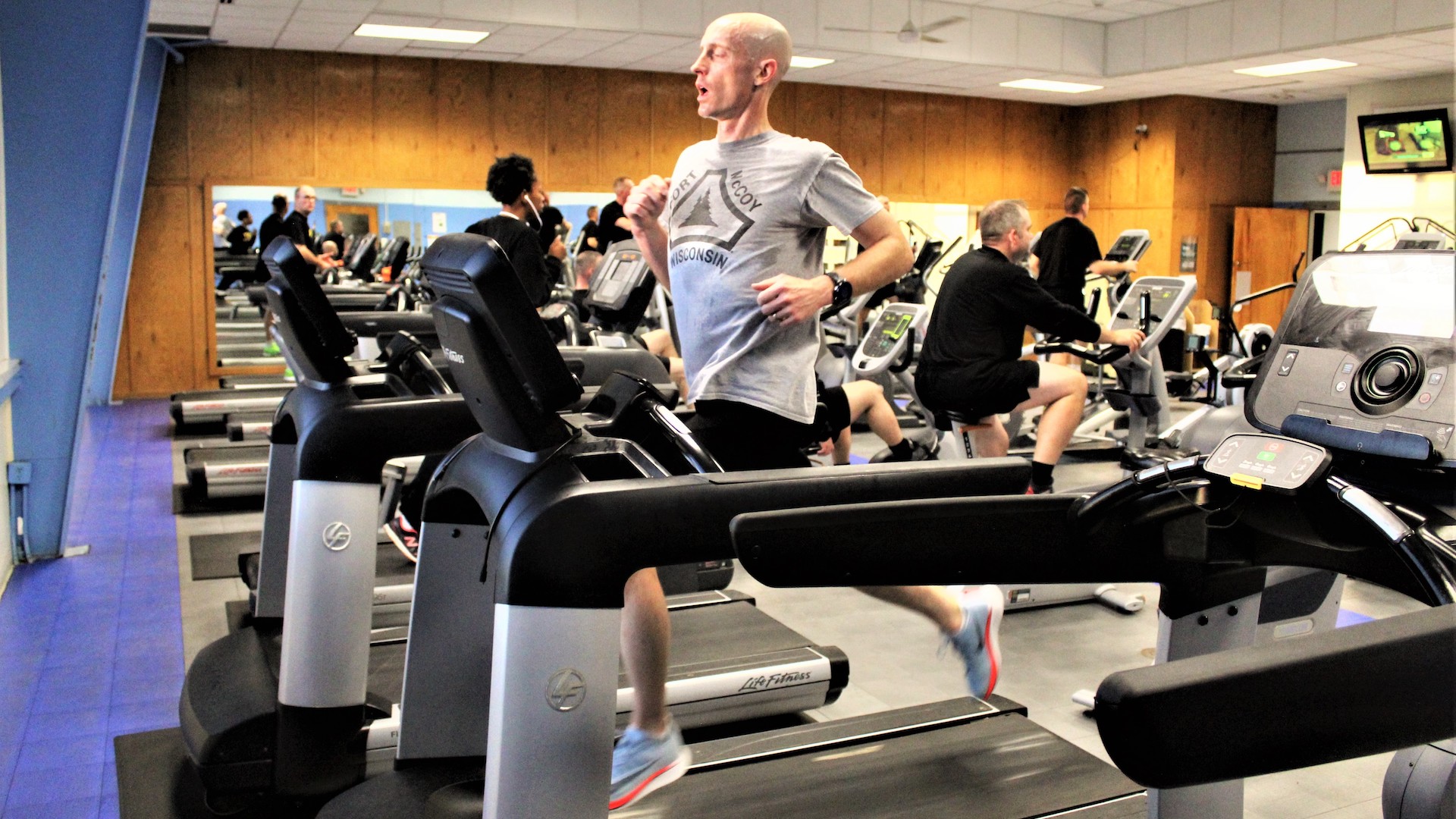
I have been informed by the running influencers of Instagram that the world is full of scenic paths, breathtaking views, and effortless strides bathed in golden sunrises. My experience has been different. Most of the running I did in the Marine Corps involved some combination of scorching heat, suffocating humidity, freezing cold, and downright hostile drivers. And a reflective belt. Always a reflective belt.
For die-hard runners, that’s all part of the charm, but for people who run because they have to, not because they want to, the proposition of running indoors is very appealing. Whether you need to knock out a few miles before work or rehab an injury, you can take care of business right at home.
Consumer-grade treadmills offer most (if not all) of the perks of the commercial treadmills at the base gym right in your own home. They can be small enough to fold into an apartment closet, and affordable enough to be offset by the money you’ll save driving to the gym. Hell, they just might make you want to add a few miles or a creative new workout to your weekly routine.
Best Overall
NordicTrack 1750
Best Budget
Xterra Fitness TR150
Honorable Mention
Peloton Tread
Best for Home
Nautilus T618
Best Manual
SB Fitness Equipment CT400
Best Smart
Echelon Stride
Best Budget-Friendly Smart
ProForm Pro 2000
Best Foldable
ProForm Cadence Compact 500
Best for Small Spaces
Goplus Folding Treadmill
Best for Walkers
WalkingPad A1 Pro
Why you should trust us
Like any Marine, I logged my share of miles in go-fasters. I ran sprint repeats at the base track in preparation for the CFT and woke up in the middle of the night for long-distance trail runs. Because I’m a gym rat, I also suffered deep emotional trauma with every step. I know what it’s like to put in the work, whether it’s in the form of a boots and utes formation run or a quick training session in a hotel gym. My goal now is to make getting those miles in as efficient as possible for you because, while running is mandatory, being constrained to your neighborhood sidewalks is not.
Types of treadmills
If you’re a little bit shocked by the number of treadmills available, you’re not alone. The options can be overwhelming. By determining how much you want to spend, how many features you expect, and how much space you have available, you can narrow down your search significantly. We considered a range of different uses and picked what we think are some of the best treadmills for this gear guide.
Smart treadmills
Smart stationary bikes took the fitness world by storm, and smart treadmills aren’t far behind. These machines tap into massive online resources like social interaction, live classes, guided runs on-demand, and detailed fitness analytics.
These extra features are awesome, but they come at a price. Plan on budgeting about $40 for a monthly subscription to take advantage of everything a smart treadmill has to offer. The good news is that everyone in your household can set up a profile and use the same account.
Are these treadmills worth the extra money? I think so. If you plan on running regularly to stay in shape, they make a world of difference. The only time I wouldn’t encourage you to consider one is if you plan on using your treadmill for walking or to stay active when the weather turns bad.
Manual treadmills
Unlike other treadmills, manual treadmills don’t need electricity to operate. It makes sense—you’re turning the belt as you run or walk, so why not use your body as a power source?
That small electrical output is enough to power a basic LCD display that tracks basic functions like time and speed. Don’t expect a lot of features from a manual treadmill; you’ll still want to have those earbuds and a carefully selected playlist handy.
The manual treadmill we chose for this list uses a curved belt that reduces the strain put on your joints. This is somewhat useful for walking, but it’s extra helpful at an all-out run. No, you won’t get motivational instructors and programmed workouts, but there’s a reason this type of treadmill is so common in professional training facilities.
Folding treadmills
For many people, space is the biggest limiting factor when shopping for fitness equipment. Maybe the garage isn’t as tidy as you’d like it to be, or maybe you live in a small apartment. Either way, I’m willing to bet there’s a treadmill that will work for you.
Folding treadmills can be collapsed for vertical storage out of the way. Some are so thin they can be slid under a couch or bed. People even use them under standing desks to keep moving while working from home.
Because of their limited size, folding treadmills offer very few features and creature comforts compared to full-size alternatives. Their belts are often smaller, making it difficult to reach full stride. If that could be a deciding factor for you, pay special attention to belt length and factor in your stride length.
Key features of treadmills
Programming
Even the most basic treadmills are likely to have some kind of programmed running. Predetermined runs aimed at fat loss, cardiovascular health, and endurance are designed to push your fitness toward a specific goal and keep you on the right track.
These days, many manufacturers are upping the game with massive screens and group classes led by professional instructors. With their help and an impressive amount of detailed analytics, you can track your performance and measure your progress over time.
This kind of thing has always been possible, but coaches are hard to come by and there’s huge room for error when you’re pacing yourself and relying on the terrain available in your area.
Size
Odds are, the treadmills at your gym are big old beasts that you wouldn’t want to store, let alone move and set up. That’s because they’re built to endure far more abuse than you’re likely to dish out and they’re kept in gyms with plenty of space.
Home treadmills are designed to work with your living area. By making components lighter and more compact, you can often get the same size running surface you’d have at the gym in a much smaller package.
Foldable treadmills can be tucked away in a closet or under a bed when not in use. They often give up a few features to their larger competitors, but the convenience is hard to beat. If you live in an apartment where space is limited, you might be surprised just how easily a treadmill can fit into your routine.
Impact absorption
One aspect of treadmill selection that often gets overlooked is impact absorption. Running is notoriously hard on your knees, so this is something you definitely need to consider.
When designed properly, treadmills can significantly reduce the strain on your joints compared to running on concrete sidewalks or asphalt roads. If this is a priority for you, look for treadmills that offer vertical and horizontal cushioning. You’ll likely be shopping in the mid-level or higher price ranges, but your knees will thank you.
If you have healthy knees or only run short distances, this doesn’t need to be as big of a factor in your buying decision. If you plan on using your treadmill for walking, you can probably forget about it entirely and focus on price.
Benefits of treadmills
Run on your schedule
The obvious advantage of owning a treadmill is the ability to run on your schedule. With one of these in your apartment or garage, there will be no more need to check the weather, drive to the gym, or fight through crowded sidewalks.
All my best runs have been outdoors, but so have my worst. There are plenty of days when summer heat can make you tap out long before your cardiovascular system gets a workout. If you live up north, you might not want to put screws into your running shoes to get traction on ice (it’s a thing, ask me how I know). A treadmill of your own lets you avoid all that and save time that you’d spend driving to the gym.
Use measurable data
Heart rate monitors are nothing new, but some modern treadmills provide a comprehensive report on every single run so you can track your performance objectively. By accessing this kind of information, you can make adjustments and stay on track to work smarter, not harder.
Running programs thrive on this kind of data, whether you look up a training regimen online or use remote classes that come with your treadmill. If you’ve ever slogged through months of grueling runs only to end up with the same result on your annual fitness test, you’ll be shocked (and thrilled) by how much more efficient smart training can be. Get ready to fall in love with graphs.
Join a broader community
In addition to live virtual classes and pre-recorded guided runs, many home treadmills tap into worldwide communities of runners. While you’re working up a sweat, you can compete against other runners in real-time, or enjoy virtual meet-ups with friends.
Some of my best memories from my time in the military involve working out with my fellow Marines. I would love it if I could have them join my gym sessions remotely. With a smart treadmill, you can. Hold each other accountable and stay in touch with occasional group runs—and maybe sneak in a few speed workouts in between to surprise your friends.
Having access to coaches is another story altogether. Ask anyone who uses guided spin bike classes, and they’ll tell you how beneficial it is to learn from world-class instructors. With huge backlogs of recorded runs, you can learn from the pros on your schedule and at your pace.
Treadmill pricing considerations
Entry-level treadmills
Any treadmill that costs less than $1,000 can safely be considered entry-level. These machines get the job done and save money, but they tend to be very basic in terms of features, size, and durability. Most of them are also very compact, which makes them a great option for people who need to log an occasional run in their apartment.
You aren’t likely to find options from the biggest names at this price, but there are a few serviceable treadmills that pack a lot of value into an accessible price. Entry-level treadmills aren’t what I’d recommend for regular training sessions because features are so sparse and both the treadmill and your knees will get tired of each other pretty quickly. They are a helpful backup during nasty weather or when you just need to get your steps in.
Home treadmills
Most of the treadmills you’ll encounter probably fall into the home treadmill category and cost between $1,000 and $2,500. These treadmills hit the sweet spot of features, build quality, and size.
Manufacturers are getting creative with technology and many home treadmills offer access to a catalog of live and archived online classes that not only make your training more enjoyable, but also more focused on a specific goal. There’s also a social element because many treadmills let you interact with friends and fellow runners during your runs. Some even include strength training and stretching classes for a well-rounded workout.
On top of that, these treadmills tend to use larger belts and more powerful motors so you can really hit your stride and push yourself. They aren’t cheap, but the extra features are hard to turn down.
Commercial treadmills
Commercial treadmills are what you’ll see at your local gym. They’re built to a high standard and work very well, but they’re also incredibly expensive, easily breaking $3,000.
Expect a selection of pre-programmed workouts like sprint repeats, hill climbs, and paced endurance runs. Heart monitors built into the handles are standard. Interactive displays may or may not be included. Remember that, unlike a personal treadmill, these have to be strong enough to handle dozens of workouts every day. That means that durability is a high priority.
The price alone is going to put commercial treadmills out of reach for most people, and that’s fine because I’m guessing they’re going to be overkill in most cases. Still, if you fell in love with the treadmill at your gym and want to have one of your own, go right ahead.
How we chose our top picks
When someone says they want to buy a treadmill, that can mean a lot of different things. Are you training for a marathon or trying to shed a few holiday pounds? Do you want to work on high-speed ascents or just take care of your health with a daily walk?
For this guide, we tried to find enough variation that anyone can find something that works for their needs. Hardcore runners will be delighted by the interactive runs and rigorous workouts offered by treadmills like the NordicTrack 1750 and Peloton Tread. More casual runners can get everything they need from the SB Fitness Equipment CT400 or Echelon Stride. If you just need something compact that won’t break the bank, we found budget-friendly options like the Xterra Fitness TR150, too. In each case, we sought out treadmills we’d actually want to use ourselves.
FAQs on treadmills
You’ve got questions, Task & Purpose has answers.
Q: How much do treadmills cost?
A: At the time of writing, the least expensive treadmill on this list cost $365. Premium home treadmills can easily reach $2,500, and commercial machines cost far more than that.
Q: Is a treadmill as good as walking or running outdoors?
A: There’s no replacement for running outdoors. Still, treadmills can absolutely improve your running. They give you more control over pace and incline, and likely offer far more versatility than the terrain outside your front door. It’s also worth considering all the times the weather causes you to skip running altogether.
Q: How much does a treadmill weigh?
A: Most treadmills weigh around 200 pounds. There’s a lot of variation depending on materials, features, and electric motor size, so the heaviest treadmills can break 300 pounds while the lightest are less than 100 pounds.
Q: Don’t treadmills take up a lot of space?
A: All treadmills require a considerable amount of space, but they don’t necessarily need it all the time. Some can be folded vertically when not in use to help you make the most of a small living space.
Q: I live in an apartment. Will a treadmill be too loud?
A: Ah, so you’ve escaped the barracks, then. Good for you. It’s possible to get a treadmill that’s quieter, lighter, and more compact than in the past. If you prioritize noise levels when shopping, you can end up with a treadmill that’s just as neighbor-friendly as your TV.
Our gear section
Scott Murdock is a Marine Corps veteran and contributor to Task & Purpose. He’s selflessly committed himself to experiencing the best gear, gadgets, stories, and alcoholic beverages in the service of you, the reader.
